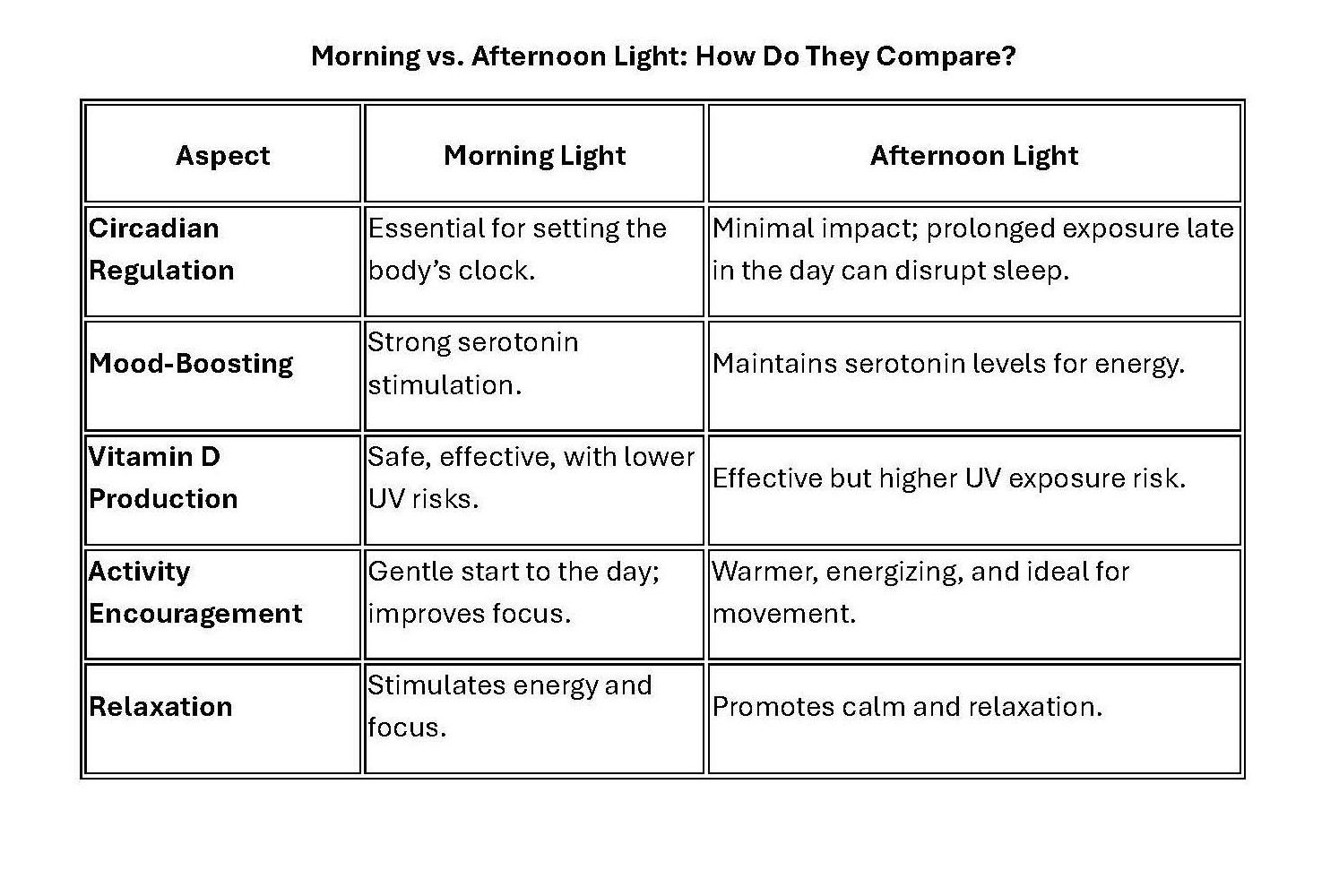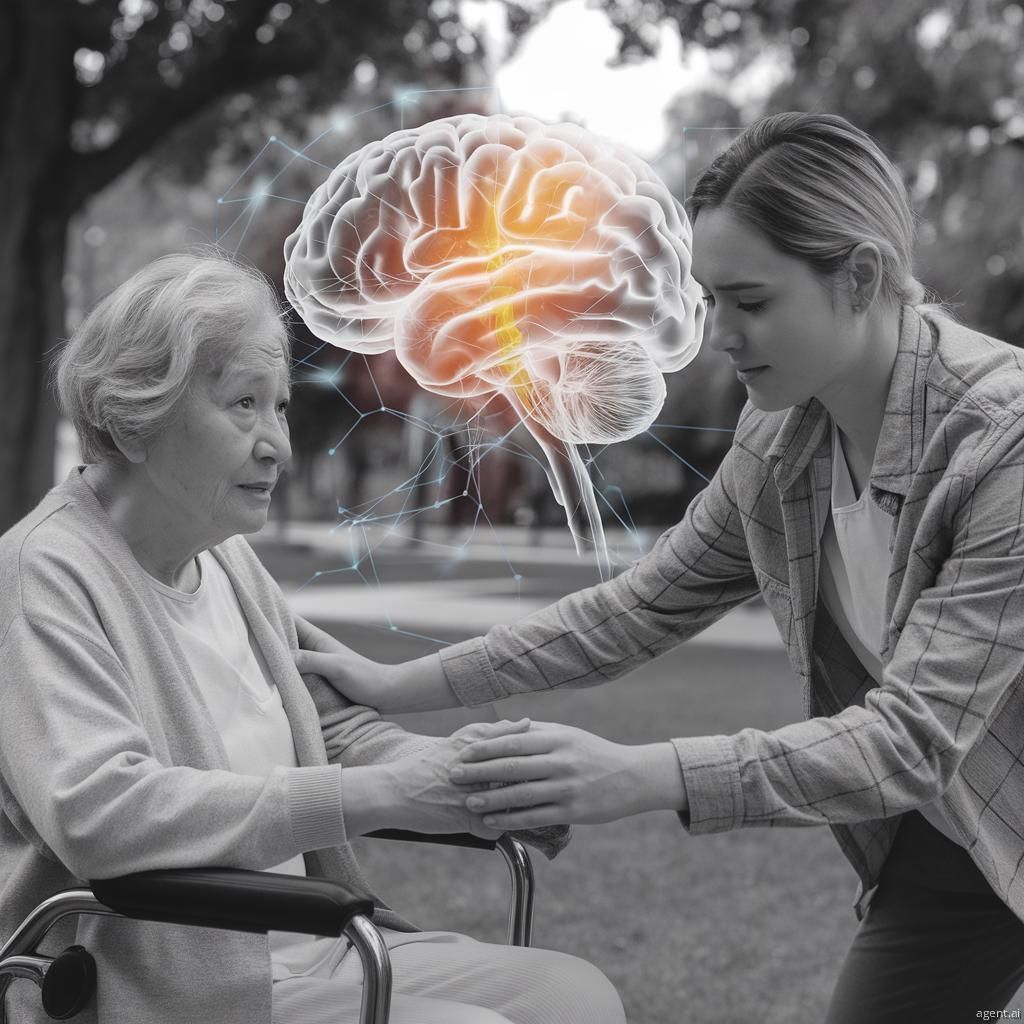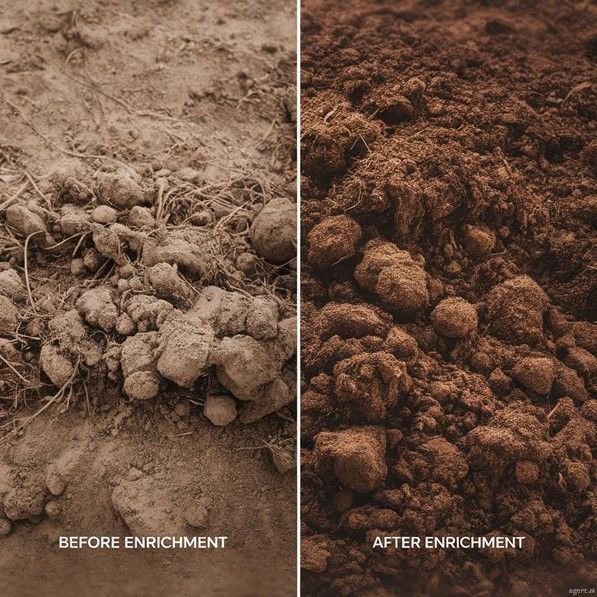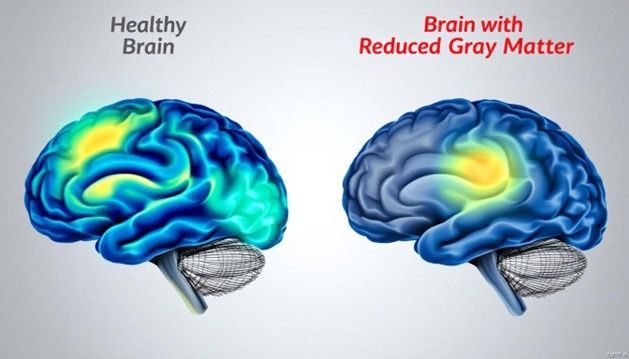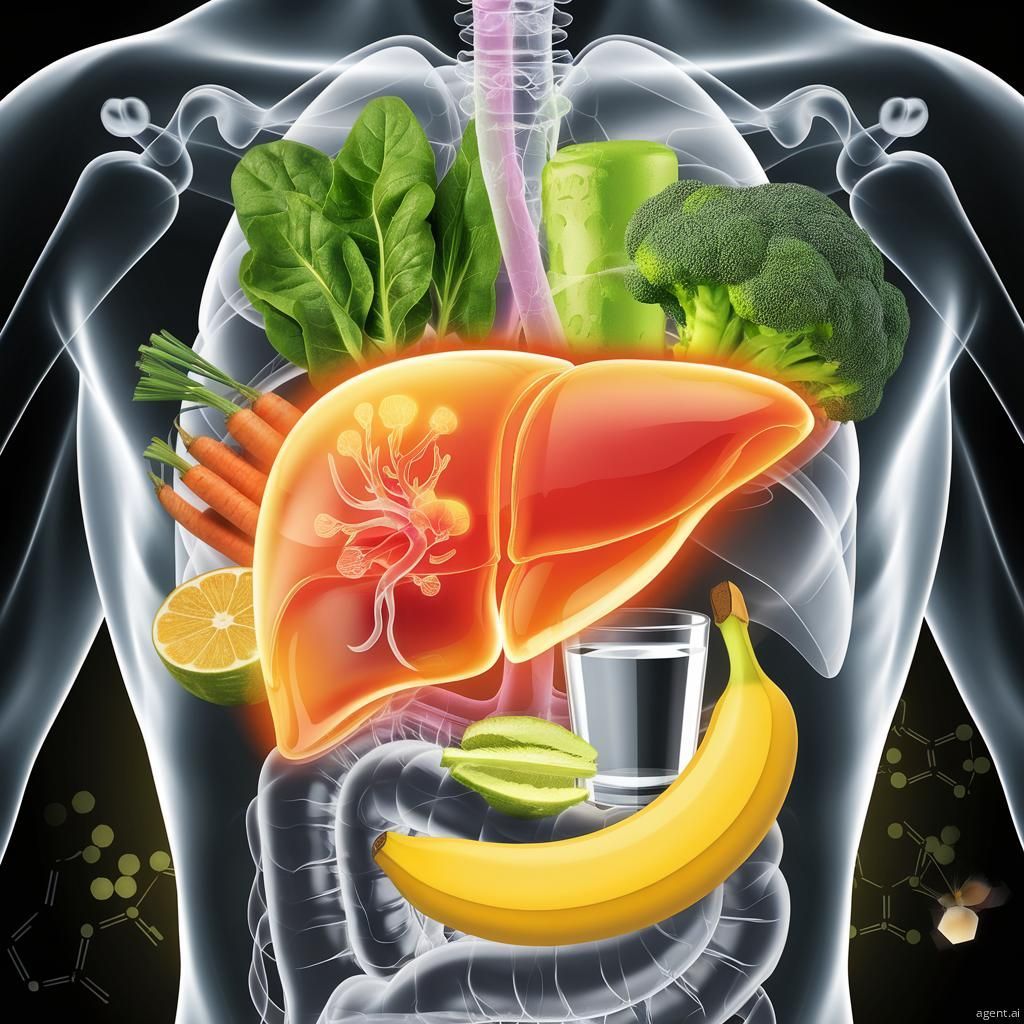Morning Light for Energy, Afternoon Light for Calm: A Guide to Sunlight’s Benefits
Light is more than just illumination—it’s a powerful tool for health and well-being. From regulating your sleep cycle to enhancing mood and energy, sunlight at different times of the day offers unique benefits. But which is better: the gentle glow of morning light or the warm embrace of the afternoon sun? Let’s explore how both can enhance your health and how you can harness their power.
Morning Light: A Vital Wake-Up Call for Your Body
The first light of the day isn’t just beautiful—it’s biologically essential. Morning sunlight has specific properties that align with your body’s natural rhythms.
Key Benefits of Morning Light
Resets Your Circadian Rhythm
Morning light is rich in blue wavelengths, which send a strong signal to your brain that it’s time to wake up.
This exposure helps suppress melatonin, the hormone responsible for sleep, and increases cortisol, giving you a natural energy boost.
Enhances Mood
Morning light stimulates the production of serotonin, a neurotransmitter linked to feelings of happiness and calm.
Regular exposure can reduce the risk of depression and combat Seasonal Affective Disorder (SAD).
Supports Better Sleep
Morning sunlight helps regulate your internal clock, making it easier to fall asleep at night. Studies show that people exposed to natural light early in the day have higher-quality sleep.
Boosts Vitamin D
Morning sunlight provides a safe way to increase vitamin D production without excessive UV exposure. Vitamin D is essential for bone health, immune function, and mental well-being.
Improves Metabolism
Research suggests that morning light exposure is linked to better glucose regulation and may help with weight management.
Afternoon Light: Energizing and Relaxing
Afternoon light doesn’t have the same circadian impact as morning light, but it offers its own set of benefits, particularly for mental and physical health.
Key Benefits of Afternoon Light
Promotes Physical Activity
The warmth and brightness of the afternoon sun often encourage outdoor activities like walking, jogging, or gardening.
These activities improve cardiovascular health, build muscle, and reduce stress.
Stabilizes Mood
Afternoon light helps maintain serotonin levels, preventing the afternoon slump and keeping you energized.
Encourages Relaxation
The warm, golden hues of afternoon sunlight can promote relaxation, reduce tension, and provide a sense of calm.
Continued Vitamin D Production
While UV radiation is higher in the afternoon, short, moderate exposure still contributes to vitamin D synthesis.
Improves Blood Pressure
Studies show that sunlight exposure can lower blood pressure, particularly when combined with gentle outdoor activities.
How to Maximize the Benefits of Natural Light
To get the most out of both morning and afternoon light, follow these tips:
Morning Routine
Spend 20–30 minutes outdoors within the first hour of waking.
Walk or sit by a window that allows natural light to reach your eyes.
Avoid sunglasses during this time to maximize light exposure (but never look directly at the sun).
Afternoon Routine
Engage in outdoor activities like walking, gardening, or a light workout.
Spend time in shaded areas if UV levels are high; use sunscreen if needed.
Use the calming effect of afternoon sunlight for mindful activities, like yoga or meditation.
Safety Considerations
Protect Your Skin: While sunlight is beneficial, too much exposure, particularly in the afternoon, can increase the risk of skin damage and skin cancer. Always use sunscreen if you plan extended time outdoors.
Monitor UV Index: Check the UV index for your location to ensure safe exposure levels.
Conclusion
Both morning and afternoon light offer unique and powerful health benefits. Whether you’re soaking in the morning rays to set your internal clock or enjoying the afternoon sun to relax and stay active, nature’s light is a gift to your well-being.
Call to Action:
What’s your favorite way to enjoy the sun? Do you prefer the energizing vibes of the morning or the relaxing glow of the afternoon? Let us know in the comments—or try adding a little more sunlight to your day and see how it transforms your health!
